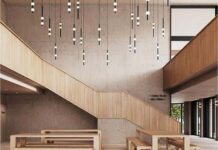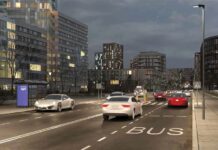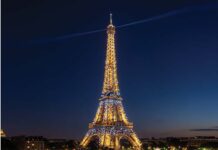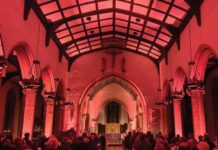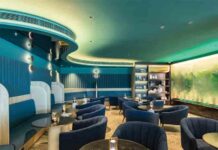
As a lighting consultant, I have the privilege of observing these changes up close, and in this article, I share my reflections on how lighting design is evolving and what this means for the built environment, the people within it, and our planet.
Human-Centric Lighting (HCL): From Concept to Daily Comfort
Human-Centric Lighting (HCL) has moved from an emerging trend to a design imperative. Scientific research has validated the profound influence of lighting on human circadian rhythms, productivity, mood, and even hormonal balance. In response, 2025 sees a widespread adoption of tunable white lighting and biologically optimized lighting strategies across sectors.
In corporate offices, light schedules now align with working hours to support alertness in the morning and relaxation toward the evening. Smart lighting systems are increasingly linked with wearable health tech, allowing environments to auto-adjust based on an individual’s biometrics such as heart rate variability or sleep quality.
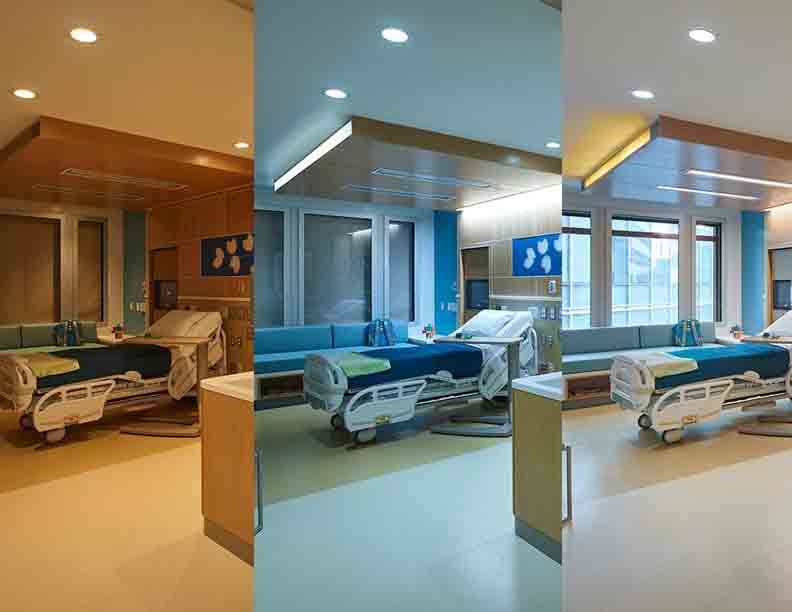
Educational institutions are integrating HCL to improve concentration, attention span, and overall student well-being. Classrooms use lighting scenes that support different teaching methods—brighter, cooler light for tests and group work; warmer, dimmer tones for reading or mindfulness sessions.
In residential projects, clients want lighting scenes tailored to their lifestyles. Morning scenes simulate daylight to energize wake-up routines, while evening scenes transition into warm, low-intensity light for unwinding. These presets are seamlessly integrated into home automation systems, allowing for effortless mood-setting.
Hospitals and elder care facilities are also embracing HCL to promote recovery and wellness, using dynamic light to mimic natural sunlight and maintain patients’ circadian balance.
Sustainability in Lighting: Beyond Energy Efficiency
Sustainability in 2025 goes far beyond using LED lamps. The conversation has matured into lifecycle analysis, embodied carbon, and ethical sourcing. Lighting designers are now collaborating with product manufacturers to prioritize cradle-to-cradle manufacturing processes.
Fixtures made from recycled or reclaimed materials, modular luminaires that allow for easy component upgrades, and biodegradable packaging are in demand. There is growing awareness of material provenance, with designers favoring suppliers who demonstrate transparency and ethical labor practices.
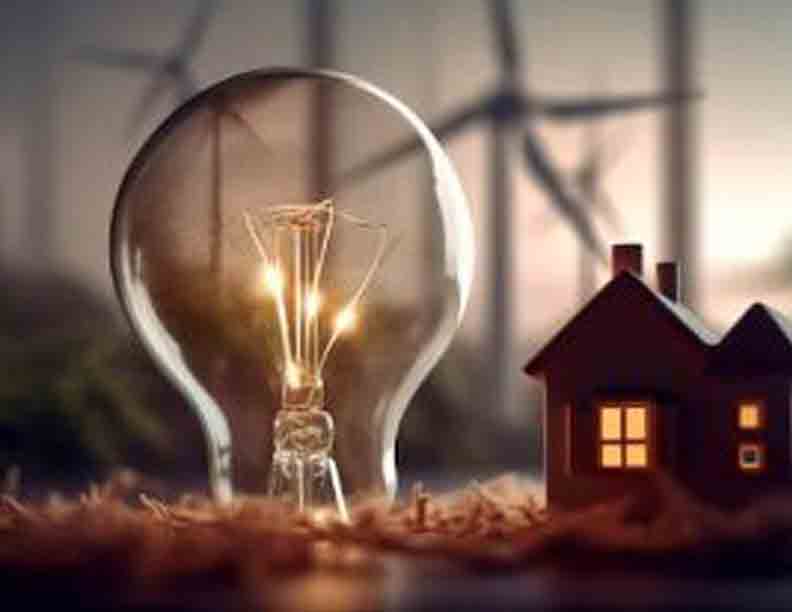
Clients ask for Environmental Product Declarations (EPDs) and Life Cycle Assessments (LCAs) to ensure that products meet stringent green building certification criteria like LEED, WELL, and IGBC. As a result, lighting consultants are now routinely engaged in sustainability workshops alongside architects and environmental engineers.
Moreover, strategic lighting design reduces the need for excess fixtures. Through photometric simulations and layered lighting techniques, we achieve optimal illumination with fewer resources. Low-energy consumption remains a baseline requirement, but we now look at the bigger picture: Can this fixture be serviced rather than discarded? Is it made locally to reduce transportation emissions? Will it remain relevant ten years from now?
Smart Lighting: Intelligence That Serves, Not Intrudes
Smart lighting in 2025 is about subtle intelligence. Systems no longer dazzle with excessive controls; instead, they quietly adapt to users’ needs, learning from behavior and improving the experience.
Advanced lighting management systems now incorporate AI algorithms to analyze space usage, occupancy trends, daylight availability, and even user mood. Offices can adjust lighting to match employee preferences or shift patterns. In retail, lighting scenes shift to reflect foot traffic, product displays, and promotional events.
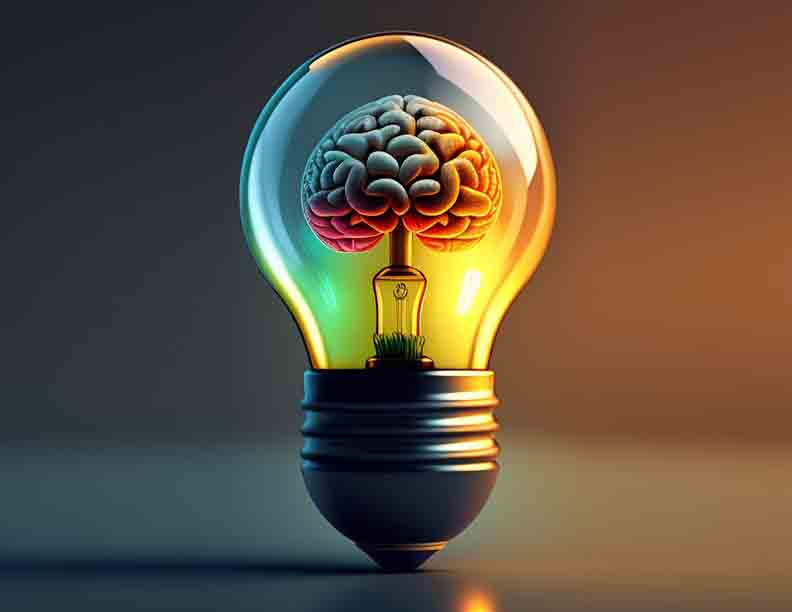
In homes, AI-enabled platforms like Google Home, Apple HomeKit, and Alexa are integrated with lighting to provide seamless voice and app control. Machine learning algorithms create personalized schedules without user input, offering true hands-free convenience.
Healthcare environments now use smart lighting to automatically dim lights during resting hours, simulate natural daylight for faster healing, and adjust hues to reduce anxiety in pediatric wards. These applications show that smart lighting is becoming emotionally intelligent as well as technologically capable.
Lighting as Architectural Storytelling
In 2025, lighting design is increasingly used to narrate a building’s identity. Whether it’s a retail boutique aiming to highlight luxury or a museum seeking to convey emotion, light is used as a deliberate, sculptural medium.
Architects and interior designers now view lighting as a co-author of the spatial story. We collaborate early in the design process, analyzing natural light ingress, ceiling heights, surface textures, and visual sightlines. This enables us to craft layered lighting plans that balance ambient, task, and accent light.
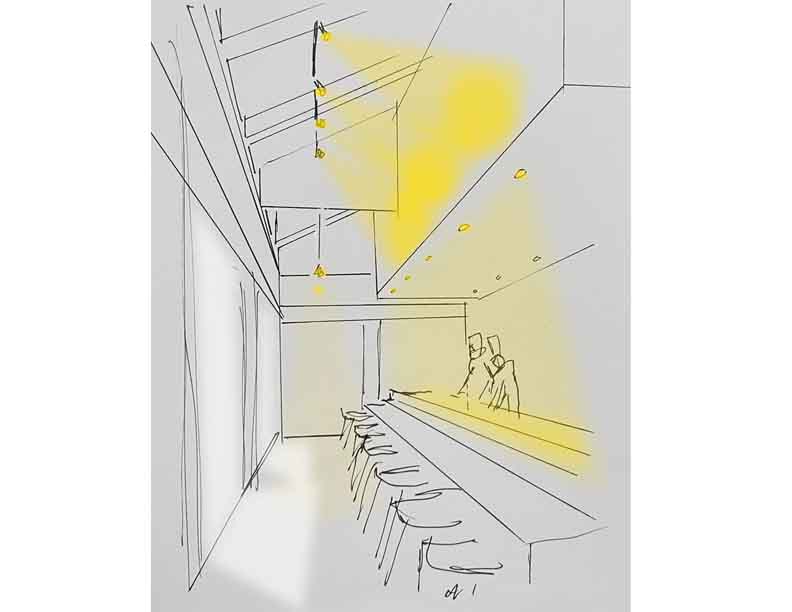
We use light not just to highlight features but to lead users on a spatial journey. For instance, a softly lit hallway might gradually increase in brightness as it opens into a main lounge. Or, a gallery space may use focused lighting to draw attention to one piece while keeping surrounding walls in shadow, controlling visual hierarchy.
The narrative power of light extends to exterior architecture as well. Façade lighting can emphasize symmetry, texture, and movement, transforming buildings into living sculptures after dark. Lighting becomes a dynamic interplay between visibility and mystery.
Outdoor and Landscape Lighting: Minimalism Meets Ecology
Exterior lighting has shifted towards an ecologically sensitive approach. With rising awareness about light pollution, especially its effects on wildlife and human health, designers are prioritizing dark-sky compliance and responsible illumination.
Fixtures now feature full cutoff optics to eliminate upward light spill. Motion sensors and dimmers ensure lighting is only active when needed, reducing both energy consumption and disruption to nocturnal ecosystems.

Color temperature is another focus. Cooler tones are being phased out in favor of 2700K to 3000K warm whites, which are more harmonious with the natural environment.
In landscapes, the design approach is becoming more artistic and immersive. Rather than flooding spaces with light, we illuminate pathways with embedded fixtures, highlight foliage with grazing techniques, and use underwater lights to create ambient reflections.
Heritage properties and public parks now often feature lighting plans that aim to preserve nightscape integrity. Subtle uplighting on trees, warm-toned bollards along walking paths, and low-glare step lights ensure that the night is enhanced rather than overwhelmed.
Lighting Controls: The Age of Effortless Experience
The complexity of lighting controls is being replaced by clarity. In 2025, the most effective systems are those that disappear into the background.
In residential projects, wall clutter is minimized with multifunctional keypads or hidden sensors. Voice-activated and app-based controls dominate, while automation handles the rest. People no longer want to fumble with dimmer settings; they want predefined scenes for “Dinner Party,” “Reading,” or “Goodnight.”
Commercial spaces are following suit. Workplaces now rely on occupancy-based zoning and daylight harvesting. In hospitality, rooms are pre-programmed to offer personalized settings based on guest preferences linked to loyalty programs.
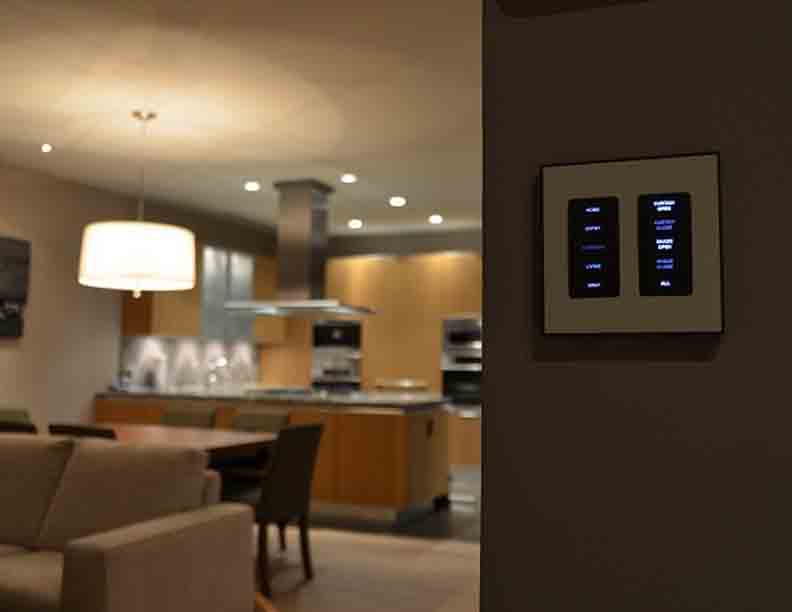
Touch panels have become more intuitive, often featuring ambient sensors that adapt their brightness based on room lighting. The era of touchscreen overload is ending; what remains is purpose-driven control.
Wireless protocols like DALI-2, Zigbee, and BLE Mesh are now common, offering robust communication across multiple devices. System integrators are more collaborative, ensuring that lighting integrates smoothly with HVAC, security, and audiovisual systems.
Decorative Lighting: Functional Art with Purpose
Decorative lighting is experiencing a renaissance. While it still serves as a visual focal point, its role in 2025 has become more expressive and layered.
Designers are commissioning one-of-a-kind pieces that reflect local art, culture, or materiality. From hand-blown glass pendants in boutique resorts to intricately carved sconces in heritage homes, decorative fixtures are not just objects — they are stories.
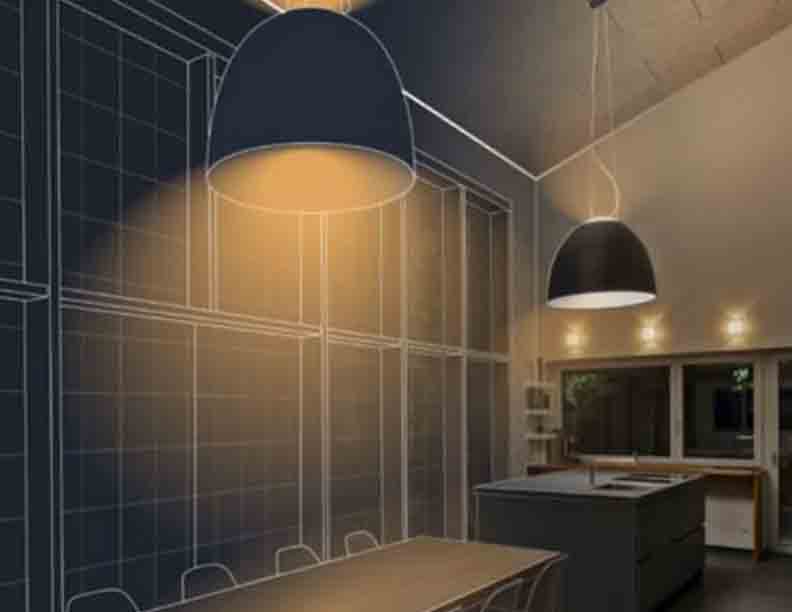
Even within their artistic form, these fixtures often house advanced technology: dimmable drivers, color tuning modules, and IoT integration. This blend of form and function aligns with the modern client’s desire for both beauty and performance.
Custom lighting is also being embraced by developers, adding a layer of exclusivity and differentiation to real estate offerings. A beautifully lit chandelier or pendant cluster can serve as a brand signature, much like a fragrance does for a luxury hotel.
Lighting as an Experience in Real Estate and Hospitality
In competitive markets, lighting is becoming a strategic differentiator. Real estate developers promote lighting design as a value-added feature. Model apartments showcase scenarios like “Work from Home,” “Date Night,” and “Yoga Time,” highlighting how light enhances lifestyle.
In hospitality, curated lighting experiences are central to brand identity. Whether it’s a luxury hotel or a co-living space, guests remember how a space made them feel. Warm welcome lights in lobbies, ambient lighting in wellness areas, and discreet task lighting in rooms all contribute to comfort and recall.
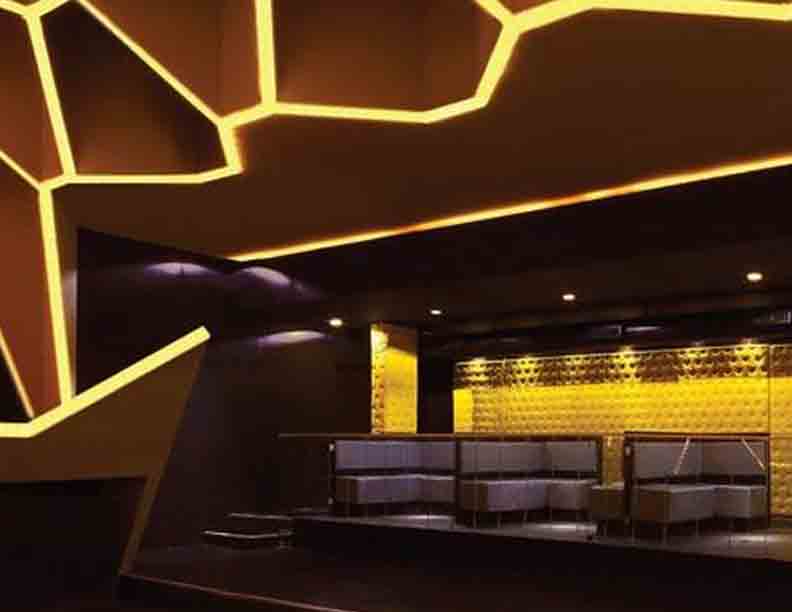
Lighting is also used to drive emotional engagement. Dynamic lobby installations, kinetic lighting displays in clubs, and soft lighting rituals in spas all contribute to brand memorability.
Hotels are increasingly integrating circadian lighting in guest rooms, spa areas, and fitness zones. Lighting design in 2025 is no longer just functional or aesthetic; it is experiential and memorable.
Embracing Local Materials and Heritage Craftsmanship
A beautiful trend in 2025 is the renewed focus on local materials and artisanship. Lighting designers are collaborating with craftspeople in brass, clay, bamboo, and wood to create lighting that is rooted in place.
This shift is driven by both sustainability and emotional value. Clients want their spaces to feel unique, and nothing delivers that better than a handcrafted fixture that tells a cultural story. For example, in coastal regions, shell-inlay lighting or driftwood sconces are making a comeback. In rural luxury resorts, we see basket-woven pendants made by indigenous communities.
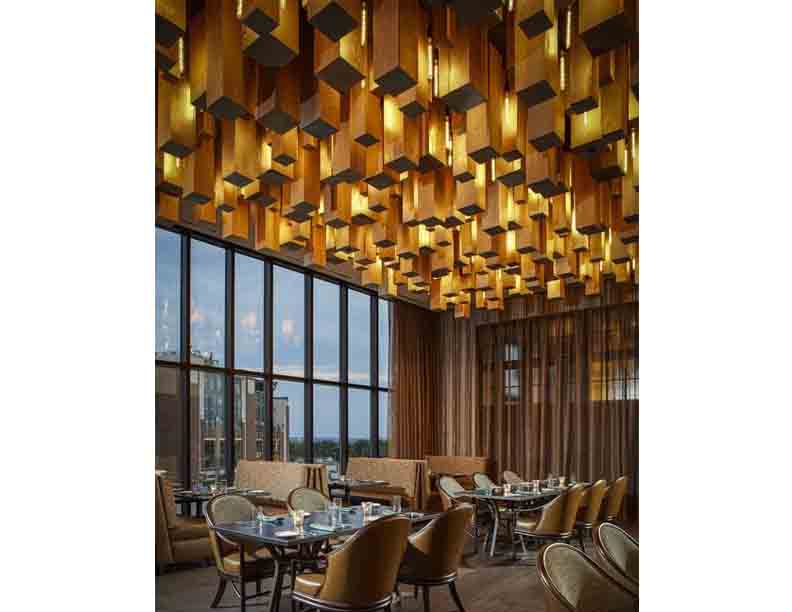
Technology complements craft. These fixtures often incorporate LED modules, smart dimming, and modular construction for easy servicing. We are also witnessing a resurgence in traditional techniques like block printing on shades, hand-knotting wireframes, and stone carving for sconces. These age-old methods are being adapted for modern, efficient applications.
The Role of the Lighting Consultant: From Specialist to Strategist
In 2025, lighting consultants are no longer seen as mere service providers; we are design strategists. Our responsibilities span far beyond fixture selection. We contribute to sustainability goals, wellness metrics, brand storytelling, and technological integration.
We are involved from the early design stages through post-occupancy evaluation. We use 3D visualizations, virtual mockups, and lighting simulation software to test concepts. We collaborate with architects, interior designers, MEP consultants, and even user experience (UX) experts.
Our value lies in synthesis: we connect the dots between light and architecture, mood and metrics, tradition and innovation. Our consultations include client education, usage audits, budget alignment, energy payback analysis, and mock-up coordination.Lighting consultants now have a seat at the decision-making table — helping developers shape design briefs, create brand strategies, and evaluate return on investment.
Conclusion: Designing for the Human Spirit
Lighting in 2025 is more than visibility. It is about vitality, emotion, sustainability, and meaning. As consultants, we are shaping spaces that respond to human needs and environmental realities.
We are lighting homes where families thrive, offices where people create, hospitals where healing begins, and hotels where memories are made. We do it not just with lumens and watts, but with empathy, understanding, and imagination.
As we continue to evolve, let us remember that the best lighting is not the most visible — it is the most felt. Subtle, smart, soulful.

Sandeip Anand (M.A Lighting Design Germany) is the Director at AIMS Lighting Design, Mumbai having professional lighting experience of more than 20 years.



